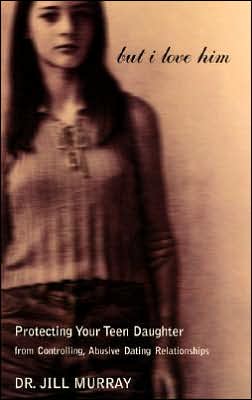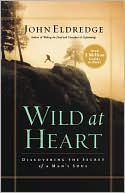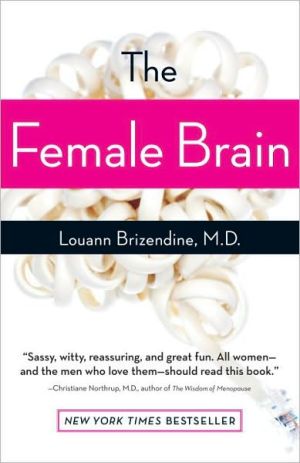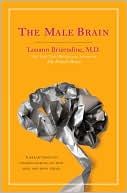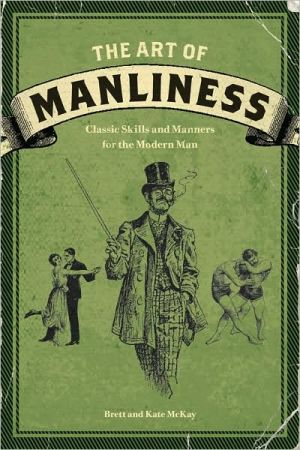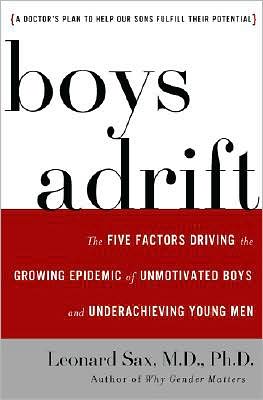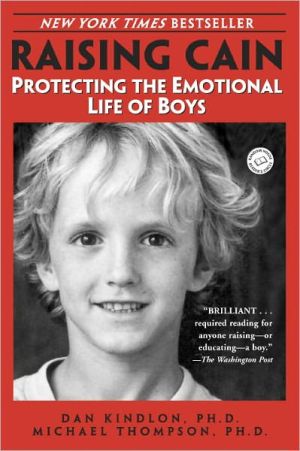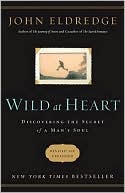But I Love Him: Protecting Your Teen Daughter from Controlling, Abusive Dating Relationships
One in three girls will be in a controlling, abusive dating relationship before she graduates from high school – from verbal or emotional abuse to sexual abuse or physical battering. Is your daughter in danger?\ Dr. Jill Murray speaks on the topic of dating violence at high schools around the country, reaching more than 10,000 students, teachers, and counsellors each year. In every school she visits, she is approached by teenage girls in miserable relationships who, when confronted with the...
Search in google:
Abusive teen dating relationships and dating violence have increased at disturbing rates over the last several years. It is estimated that one in three girls will have an abusive dating experience by the time she graduates from high school -- from verbal and emotional abuse, to sexual abuse, to physical battering. Psychotherapist Dr. Jill Murray now provides the first book addressed to parents that informs them of the warning signs of potentially controlling and abusive boyfriends; e.g., he pages and calls often, but as a form of control, not affection, or he says "I love you" too quickly. Parents also will learn what draws their daughter to this type of relationship, why teens don't tell their parents of their fears, the special barriers girls face when breaking off the relationship, and, most important, how they can help their daughter get out of the abusive relationship and develop new, healthier expectations for future ones. Times Picayune Murray details the warning signs [of abusive relationships] so that parents can prevent their teen-age daughters from entering this dangerous cycle.
Chapter One\ What Is Teen Dating Abuse?\ Abusive dating relationships and dating violence have increased at alarming rates in the last five years. It is estimated that one in three girls will have an abusive dating experience by the time she graduates from high school. In my professional experience--counseling girls and their parents in this situation--this is a gross underestimation. By this conservative figure, more than eight million girls per year in the United States alone will suffer at the hands of a violent boyfriend before their eighteenth birthdays. Teen abuse is epidemic. In America today, every nine seconds a teenage girl is battered by someone with whom she is in a relationship. What is most alarming is that the signs of potential abuse are also behaviors that young women find most flattering.\ I'm sure you never thought you'd be reading a book about teen dating violence. I'm also sure you never imagined that your daughter would be involved in an abusive relationship. Oh, you may have worried about other potential problems: pregnancy, sexually transmitted diseases, and drunk driving. But it probably never entered your consciousness that your own daughter could be involved with a boy who is verbally, emotionally, sexually, or physically abusive. Give yourself a break. No parent wants to think of emotional or physical harm coming to her own child.\ The University of Michigan Sexual Assault Prevention and Awareness Center in Ann Arbor defines dating violence as "the intentional use of abusive tactics and physical force in order to obtain and maintain power and control over an intimate partner." There are three key words inthis definition. Intentional is important to understand because it is clear that your daughter's boyfriend is cruel to her on purpose. As we will discuss further in chapter 6, violence of any sort is a learned behavior and completely voluntary. No one forces a teenage abuser to behave as he does, and it is totally within his power to stop. Power and control are also crucial words. Like adult batterers, the teen abuser uses tactics of control and coercion to keep his "victim" tied to him.\ Before we go any further, I would like you to consider a few questions regarding your daughter's relationship with her boyfriend. If you recognize some of these warning signs in your daughter's relationship and feel that she may be in serious danger, please call your local police or sheriff's department or the National Domestic Violence Hotline at 800-799-SAFE.\ IS MY DAUGHTER IN DANGER?\ \ Before my daughter met her boyfriend, she had more friends than she does now.\ Her grades have declined in the past weeks or months.\ Before she started dating him, she was more outgoing and involved with her family, school activities, and/or place of worship.\ She frequently cries or is very sad.\ If he pages her, she must call him back immediately.\ He told her that he loved her early in their relationship.\ He is jealous if she looks at or speaks casually with another boy.\ He accuses her of behavior she doesn't actually engage in.\ He is aggressive in other areas of his life: he puts his fist through walls or closets, bangs his fist to make a point, or throws things when angry.\ He frequently roughhouses or play-wrestles with her.\ She makes excuses for his poor behavior or says it's her fault.\ They talk on the phone several times a day or for long periods.\ He has a "tragic" home life: he is or was physically abused or verbally demeaned, and/or one or both parents are alcoholics or use drugs.\ He drinks or uses drugs.\ He frequently gives her "advice" about her choice of friends, hairstyle, clothes, or makeup.\ He calls her demeaning names, then laughs and tells her he was only kidding or that she's too sensitive.\ She has become secretive since she started dating him. She is miserable whenever she is apart from him.\ She has recently become very critical of her appearance, talents, or abilities.\ She frequently has to explain herself to her boyfriend or often says she's sorry.\ She has bruises she cannot explain or appears nervous about explaining to me.\ \ In the next three chapters we'll discuss each level of violence in detail so that you will clearly understand the problem your daughter is facing and the ways in which you can help her now. First, however, consider these statistics on teen dating violence:\ \ Thirty-six percent of female high school and college students surveyed--more than one in three--said that they had experienced some violence in a dating relationship.\ As many as 50 percent of dating women suffer physical, sexual, emotional, or verbal abuse from their dating partners.\ The majority of violence (as much as 86 percent) occurs during the "steady"/serious phase of a relationship.\ Twenty-five percent of female homicide victims are between fifteen and twenty-four years old.\ One in three women who are killed in the United States are murdered by their boyfriend or husband.\ Results of recent interviews with approximately fourteen hundred students in rural North Dakota indicate that students from abusive households were twenty-five times more prone to dating violence than those from homes without abuse.\ Ninety percent of men in prison come from abusive homes.\ \ These are horrifying facts. The bad news is that unless your daughter wants to get out of her relationship, there is little you can do to convince her that's what's best for her. The good news is that throughout this book we will examine the history of her problem--that is, what led her to an abusive relationship--and the ways in which you can go about extricating your daughter from this nightmare.\ But I Love Him. Copyright © by Jill Murray. Reprinted by permission of HarperCollins Publishers, Inc. All rights reserved. Available now wherever books are sold.
AcknowledgmentsixIntroduction: Our Daughters Are in Danger11.What Is Teen Dating Abuse?72.Verbal and Emotional Abuse: The First Level of Violence223.Sexual Abuse: The Second Level of Violence404.Physical Abuse: The Third Level of Violence505.Warning Signs: Recognizing Abusive Teenage Relationships586.What's He Thinking? How to Spot a Potential Abuser687.Why Girls Choose Abusive Relationships778.Infatuation, Addictive Love, and Mature Love859.The Role of Alcohol and Drugs10210.How to Prevent Abuse in the First Place: Family Dynamics11511.Girls Who Abuse Boys13112.Why Teens Don't Tell: How to Talk to Your Daughter About Abuse13813.Medical, Legal, and Psychological Interventions: Confronting Abuse14814.Who Will Our Daughters Become? What We Want for Girls in an Ideal World164Resources179Index185
\ From Barnes & NobleOur Review\ Seventeen, in Love, and in Danger \ \ As a leading authority on abusive teen-dating relationships, psychotherapist Jill Murray's appearances on TV and radio talk shows, including Oprah, have prompted thousands of calls, letters, and emails. Now Murray has put her vast knowledge and experience into a book aimed at tackling this alarming problem. But I Love Him is an apt title as it represents the sort of excuse used by so many young women in abusive relationships -- women who are caught up in the throes of denial and who define love as a type of behavior. This is a must-read for any parent, as Murray emphasizes prevention as strongly as she does correction.\ The statistics are shocking. More than a third of high school and college students surveyed say they have experienced violence in a dating relationship. About half of all dating women have suffered physical, emotional, verbal, and/or sexual abuse from their partners. One quarter of female homicide victims are between the ages of 15 and 24, and a third of all women murdered in the U.S. die at the hands of their boyfriend or husband. Clearly, relationship violence against women is a serious problem. And for many, it begins during the teen years, when emotions and hormones are both running high and dating habits are developed.\ Murray attacks the problem using a three-pronged approach. The first is learning to identify the types of behaviors and situations that are a precursor to an abusive relationship, including how a boyfriend behaves, the type of home environment he comes from, and how a daughter caught in an abusive relationship might behave. The second step involves taking a hard and objective look at one's own family environment, identifying problematic behaviors and negative influences and making whatever changes are needed to promote trust, open communication, and harmony. The third step is learning what parents can and can't do, legally and otherwise, to rescue their daughters from abusive relationships.\ Murray's coverage of the issue is extensive and dynamic. She addresses everything from minor verbal abuse to physical battery, from the type of behaviors that can help parents spot a potential abuser to the medical, legal, and psychological interventions available if such a relationship already exists. But I Love Him not only helps parents understand what motivates these young men and women. In the long run, it could save their lives.\ --Beth Amos\ \ \ \ \ \ San Jose Mercury NewsThe testimonials [and] Murray's psychoanalysis help the reader understand the eerie undertones in abusive relationships; [the book] speaks to the heart of parents.\ \ \ Los Angeles TimesEven parents whose daughters have not experienced abuse would benefit from this book. Murray describes how parents can talk to their daughters not just about sex, but also about dating and the elements of a healthy relationship.\ \ \ \ \ Times PicayuneMurray details the warning signs [of abusive relationships] so that parents can prevent their teen-age daughters from entering this dangerous cycle.\ \ \ \ \ Times PicayuneMurray details the warning signs [of abusive relationships] so that parents can prevent their teen-age daughters from entering this dangerous cycle.\ \ \ \ \ Sandy CondelloBut I Love Him is one of the best written, easiest to read books on teen relationships I have ever read. Dr. Jill Murray has blended her personal experiences with her professional training, providing a primer for teens and parents. A must read!\ \ \ \ \ Marian BetancourtIf all parents of daughters—as well as sons—read this book, we could prevent a great deal of violence against women in this country.\ \ \ \ \ VOYAMurray, a psychotherapist with experience treating battered women, appeared on Oprah and was inundated with calls from concerned parents. This book, specifically for parents, focuses on the causes of abusive teen dating relationships and ways to get a daughter out of an abusive relationship. The chapters cover dating abuse, levels of abuse (verbal/emotional, sexual, and physical), and warning signs. Also discussed are spotting potential abuse, reasons why girls choose abusive relationships, types of love, roles of alcohol and drugs, prevention, and family dynamics. Murray explains how to talk to your daughter, discusses parental expectations, and offers medical, legal, and psychological interventions. The resources section includes annotated lists of books for adults and teens, Internet resources, and telephone numbers and hotlines of helpful organizations. Resources are provided by category: dating and domestic violence, emotional well-being, legal services, missing children and runaways, self-esteem, sex and family planning, sexual assault, sexually transmitted diseases, and substance abuse. Murray writes in a readable, conversational style with case examples and quotes from teenage girls. Her approach is realistic and straightforward. She encourages parents to realize that their daughters are not victims but choose to participate in destructive relationships. The necessity for intervention is emphasized. Useful details about types and consequences of medical, legal, and psychological intervention are included. The book has much valuable information, but its focus will limit the usefulness of the book to public libraries, to school libraries with a professional section accessibleto parents, or to counselors who might recommend the book to parents. 2000, Regan Books/HarperCollins, 193p, Index. Ages adult. Reviewer: Sherry York VOYA, February 2001 (Vol. 23, No.6)\ \
